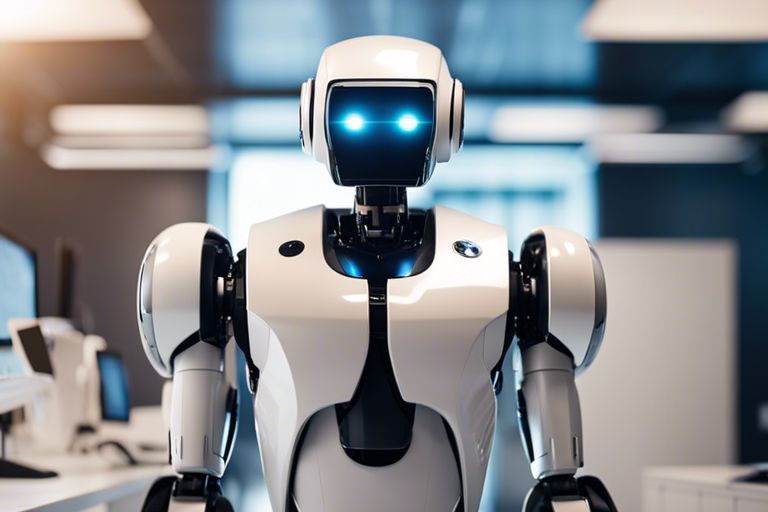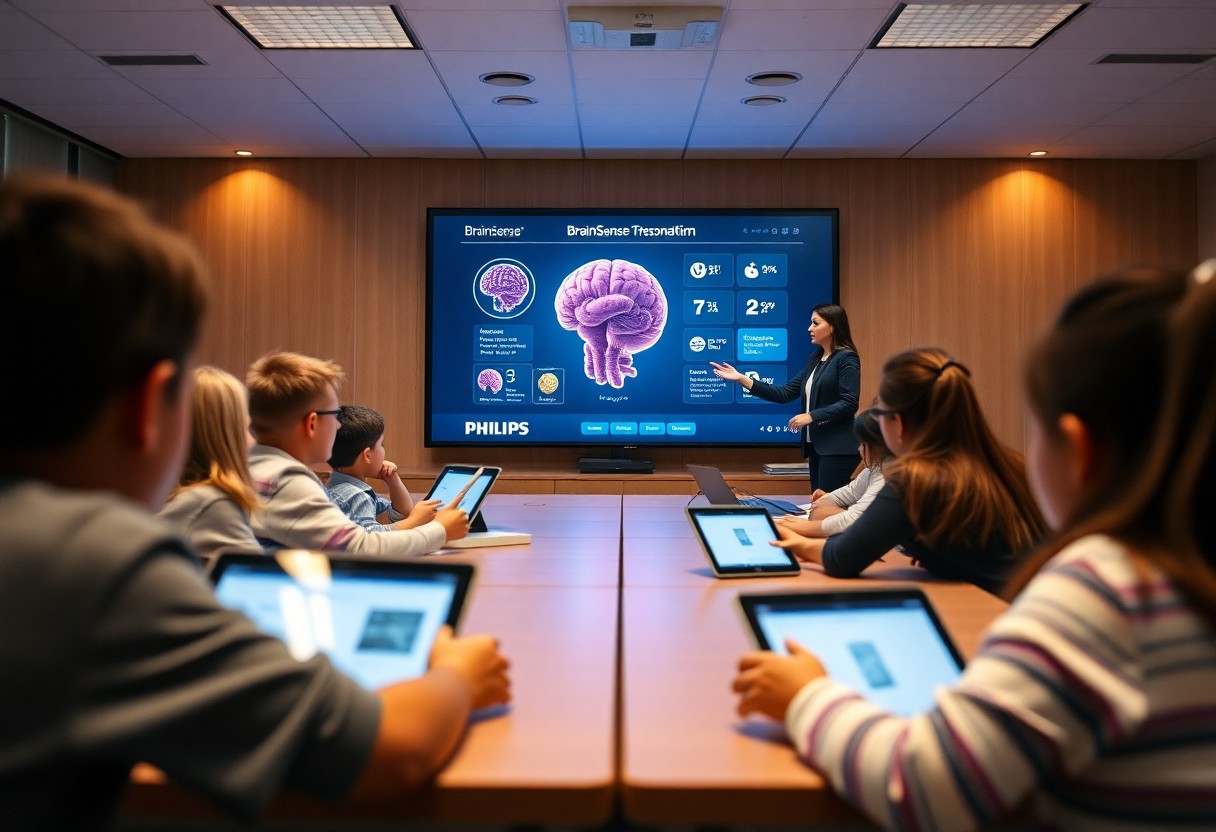With the rapid advancement of technology, AI is revolutionizing the educational landscape. In this article, we investigate into the impact of AI on educational outcomes, shedding light on its benefits and potential challenges. Join us as we unravel the mysteries behind how AI is reshaping the way we learn and teach, and discover the crucial role it plays in shaping the future of education.
The Rise of AI in Education
Historical Context: From Calculators to Chatbots
With the steady advancement of technology, the integration of artificial intelligence into educational settings has become more prevalent. From the introduction of calculators in classrooms to the emergence of chatbots that assist students with their queries, AI has steadily transformed the landscape of education.
Calculators were one of the early forms of AI that aided students in solving complex mathematical problems more efficiently. Over time, this technology paved the way for more sophisticated AI applications such as chatbots that can provide personalized learning experiences and real-time support to students.
Current State: AI-powered Adaptive Learning Systems
Learning through AI has revolutionized the traditional one-size-fits-all approach to education. AI-powered adaptive learning systems analyze data from students’ interactions to personalize learning paths, provide targeted feedback, and offer tailored resources. This individualized learning approach has the potential to enhance students’ understanding and retention of concepts.
It is evident that AI-powered adaptive learning systems have the capability to cater to diverse learning styles and pace, making education more inclusive and effective. By providing immediate feedback and customized learning materials, students can progress at their own speed, ultimately improving their educational outcomes.
The Promises of AI-driven Education
If there is one thing that Artificial Intelligence (AI) promises to revolutionize in education, it’s the customization of the learning experience to cater to individual needs.
Personalized Learning Experiences
An imperative feature of AI-driven education is its ability to provide personalized learning experiences. By analyzing data on students’ performance, behavior, and preferences, AI algorithms can tailor learning materials, pace, and assessment methods to suit each student’s unique learning style. This targeted approach has shown to significantly improve student engagement, motivation, and ultimately, academic performance.
Enhanced Accessibility and Inclusivity
Personalized learning facilitated by AI also contributes to enhanced accessibility and inclusivity in education. AI can adapt content for students with diverse learning needs, including those with disabilities, learning difficulties, or language barriers. For instance, AI-powered tools can provide real-time translations, transcriptions, or audio descriptions to support students who may struggle with traditional learning materials. This level of customization ensures that all students have equal opportunities to access and benefit from educational resources.
The Dark Side of AI in Education
Bias in AI Systems: Perpetuating Inequality
Any discussion about the dark side of AI in education must include the issue of bias in AI systems, which can perpetuate inequality. AI algorithms are only as unbiased as the data they are trained on. If the data used to train these systems contain biases, the AI will inevitably reflect and perpetuate these biases, potentially leading to discriminatory outcomes.
Inequality in AI algorithms can manifest in various ways, such as favoring certain demographic groups over others in educational opportunities or reinforcing stereotypes that already exist in society. This can have detrimental effects on marginalized communities, exacerbating disparities in access to quality education and hindering efforts towards creating a more equitable learning environment.
Job Displacement: The Future of Teachers
Dark clouds loom over the teaching profession as AI continues to advance. The fear of job displacement among teachers is a genuine concern as AI technology becomes more sophisticated in performing tasks traditionally carried out by educators. While AI can assist teachers in administrative tasks, grading, and even personalized learning experiences, there is a looming question about the future role of teachers in the classroom.
Education systems worldwide will need to carefully navigate the integration of AI to ensure that it complements rather than replaces teachers. The human touch, empathy, and critical thinking skills that teachers bring to education are irreplaceable by AI. Finding the balance between leveraging AI technology for its benefits while preserving the necessary human elements in education will be crucial for shaping the future of learning.
AI-generated Content and Academic Integrity
After discussing the various ways in which AI is shaping the educational landscape, it is crucial to address the impact of AI-generated content on academic integrity. As technology continues to advance, the lines between original work and AI-generated content are becoming increasingly blurred, raising concerns about plagiarism and cheating in educational settings.
The Rise of AI-powered Essay Writing Tools
Writing essays has always been a fundamental part of academic life, but with the emergence of AI-powered essay writing tools, students now have access to a wide range of resources that can generate essays in a matter of minutes. These tools use advanced algorithms to analyze prompts and generate coherent and well-structured essays, making it easier for students to produce high-quality work with minimal effort.
Detecting AI-generated Content: The Role of Educators
On the other hand, the widespread use of AI-generated content poses a significant challenge for educators tasked with upholding academic integrity. It is necessary for educators to stay vigilant and implement strategies to detect AI-generated content effectively. By familiarizing themselves with the patterns and characteristics of AI-generated work, educators can better identify instances of plagiarism and cheating in their classrooms. Additionally, educators can leverage technology and plagiarism detection tools to help identify and address cases of academic dishonesty.
Human Touch vs. AI-driven Instruction
Despite the rapid advancement of artificial intelligence in education, the debate over the effectiveness of human touch versus AI-driven instruction continues. While AI-powered platforms offer personalized learning experiences and immediate feedback, some argue that they lack the emotional intelligence crucial for student development.
The Importance of Emotional Intelligence in Education
An crucial aspect of education is emotional intelligence, which involves understanding and managing emotions. Human teachers can provide empathy, support, and encouragement, creating a nurturing environment that fosters learning and growth. This emotional connection is challenging for AI to replicate, as machines cannot genuinely empathize with students or adapt their teaching based on emotional cues.
Can AI Replace Human Teachers?
Importance – Can AI Replace Human Teachers?
Replace – While AI can supplement traditional teaching methods and improve certain aspects of education, it cannot fully replace human teachers. Human educators bring empathy, creativity, and critical thinking to the classroom, qualities that AI currently lacks. Additionally, the mentorship, guidance, and social interaction provided by human teachers are crucial for the holistic development of students. As AI continues to evolve, it is crucial to strike a balance between technology and the human touch in education.

The Impact of AI on Student Motivation
For many educators, student motivation is a key factor in driving academic success. With the integration of Artificial Intelligence (AI) in education, there has been a significant impact on student motivation. AI has revolutionized the way students engage with learning materials and has provided new avenues to enhance motivation and learning outcomes.
Gamification and Engagement Strategies
With the help of AI, educators can now implement gamification and engagement strategies to make learning more interactive and fun. By incorporating elements such as game-like challenges, rewards, and progress tracking, AI can incentivize students to stay motivated and engaged throughout their learning journey. These strategies not only make learning more enjoyable but also help students develop a sense of accomplishment and progress, leading to increased motivation and better educational outcomes.
The Role of AI in Fostering Autonomy and Self-Direction
An necessary aspect of student motivation is fostering autonomy and self-direction in learning. AI plays a crucial role in empowering students to take control of their learning paths by providing personalized recommendations, adaptive learning experiences, and instant feedback. This individualized approach helps students build confidence in their abilities, encourages independent thinking, and promotes a sense of autonomy over their education.
Impact: AI’s ability to foster autonomy and self-direction in students is a game-changer in education. By tailoring learning experiences to individual needs and preferences, AI not only boosts motivation but also instills necessary skills such as self-regulation and decision-making. With AI as a guiding force, students are better equipped to navigate their academic journey with confidence and determination.
AI-assisted Assessment and Evaluation
Many educational institutions are now turning to AI-assisted assessment and evaluation tools to streamline the grading process and gain deeper insights into student performance. These systems utilize machine learning algorithms to grade assignments, quizzes, and exams efficiently. However, like any technology, AI-assisted assessment tools come with their own set of pros and cons.
Automated Grading Systems: Pros and Cons
Grading
| Pros | Cons |
| Increased efficiency | Potential bias in algorithms |
| Quick feedback for students | Limited in capturing creativity and critical thinking |
| Scalability for large classes | Technical errors or glitches |
| Consistent grading standards | Concerns about data privacy |
Using AI to Identify Learning Gaps
Identify
Many educators are leveraging AI tools to pinpoint areas where students may be struggling or have gaps in their understanding. These tools analyze data from assessments and interactions to identify patterns and trends that indicate where additional support may be needed. By detecting learning gaps early on, educators can tailor their instruction to better meet the individual needs of students.
Understanding
AI’s ability to identify learning gaps can revolutionize education by providing personalized support to students. This targeted approach can help prevent students from falling behind and ultimately improve educational outcomes. However, it’s crucial for educators to interpret AI-generated insights thoughtfully and combine them with their expertise to ensure students receive the most effective support.
The Digital Divide: Access to AI-driven Education
To fully understand the implications of AI on educational outcomes, we must first examine the disparities in access to AI-driven education. AI technology has the potential to revolutionize education by personalizing learning experiences, providing immediate feedback, and enhancing student engagement. However, not all students have equal access to these cutting-edge tools and resources, creating a digital divide that can exacerbate existing educational inequalities.
The Widening Gap between Haves and Have-Nots
For students from affluent backgrounds or well-funded schools, access to AI-driven educational tools is often readily available. These students have the opportunity to benefit from personalized learning experiences and real-time feedback, giving them a significant advantage in their academic pursuits. On the other hand, students from underserved communities or resource-strapped schools may lack access to AI technology, further widening the gap between academic achievers and those who are left behind.
Strategies for Bridging the Digital Divide
Bridging the digital divide in education is crucial to ensure that all students have equal opportunities to succeed. One effective strategy is to invest in providing access to AI technology in underserved schools, equipping students with the tools they need to thrive in a technology-driven world. Collaborations between schools, governments, and tech companies can also help in creating initiatives that aim to level the playing field and ensure that all students have access to high-quality education, regardless of their socioeconomic background.
Widening access to AI-driven education is not just about providing students with the latest technology, but also about empowering them with the skills and knowledge to leverage these tools effectively. By investing in bridging the digital divide, we can create a more equitable educational landscape where every student has the opportunity to reach their full potential and succeed in the digital age.
Teacher Training and AI Literacy
Once again, the role of teachers in preparing students for the future is paramount. With the integration of AI into classrooms, there is a pressing need for educators to be well-versed in AI technology and its implications for teaching and learning. As such, teacher training programs must adapt to include AI literacy as a core component of professional development.
Preparing Educators for an AI-driven Classroom
To ensure that educators are adequately prepared to leverage AI tools in the classroom, training programs should focus on building their understanding of AI technology, its applications in education, and how to integrate it effectively into their teaching practices. By equipping teachers with the necessary knowledge and skills, they can create engaging and personalized learning experiences that cater to the diverse needs of their students.
The Need for Ongoing Professional Development
To keep pace with the rapid advancements in AI technology, teachers must engage in ongoing professional development to continually enhance their AI literacy and pedagogical practices. This includes staying informed about the latest AI tools and resources available for education, collaborating with peers to share best practices, and reflecting on how AI can optimize student learning outcomes.
Teacher continuing education and upskilling are crucial to ensuring that students are prepared for the AI-driven future workforce. By fostering a culture of lifelong learning among educators, schools can create a dynamic and future-ready learning environment that empowers students to thrive in the digital age.
AI-driven Education Policy and Regulation
Navigating the Ethics of AI in Education
An imperative aspect of AI-driven education policy and regulation is navigating the complex ethical considerations that come with implementing artificial intelligence in learning environments. As artificial intelligence systems become more integrated into educational settings, it is crucial to address concerns surrounding data privacy, algorithmic bias, and transparency in decision-making processes. Educators, policymakers, and technologists must work together to establish ethical guidelines that prioritize the well-being and rights of students while harnessing the potential benefits of AI in education.
The Role of Governments in Shaping AI Policy
Education policy plays a vital role in shaping the integration of AI technologies in schools and educational institutions. Governments worldwide are increasingly focusing on developing frameworks and regulations to govern the use of AI in education. From establishing standards for data protection to defining guidelines for AI-assisted learning programs, policymakers are taking proactive steps to ensure that AI is used responsibly and ethically in educational settings. By collaborating with experts in the field and engaging with stakeholders, governments can create policies that enable the effective and safe implementation of AI technologies in education.
The Future of AI in Education: Trends and Predictions
Emerging Technologies: AI-powered Virtual Reality
Technologies such as AI-powered virtual reality are set to revolutionize the education sector by providing immersive learning experiences for students. With the ability to simulate real-world environments and scenarios, this technology has the potential to enhance student engagement, improve knowledge retention, and cater to diverse learning styles. By incorporating AI algorithms, virtual reality can adapt to individual student progress, providing personalized learning pathways that cater to each student’s unique needs.
The Potential for AI to Revolutionize Special Education
The integration of AI in special education holds great promise for revolutionizing the way students with disabilities learn and interact with educational content. AI-powered tools can offer personalized learning experiences tailored to the specific needs of students with disabilities, empowering them to learn at their own pace and in a way that suits their learning style.
Reality: As AI continues to advance and become more integrated into educational settings, it is crucial for educators and policymakers to ensure that these technologies are ethically implemented and accessible to all students, including those with disabilities. By embracing the potential of AI in special education, we can pave the way for a more inclusive and equitable education system for all learners.
Addressing the Challenges of AI-driven Education
Ensuring Transparency and Accountability
All technological advancements come with challenges, and AI-driven education is no exception. Ensuring transparency and accountability in the use of AI algorithms is crucial to maintaining trust in the educational system. It’s vital for educators, students, and parents to understand how AI technologies are being used to make decisions that impact learning outcomes. Transparency can help demystify the inner workings of AI algorithms, leading to more informed stakeholders.
Fostering Collaboration between Educators and AI Developers
Any successful integration of AI in education requires a deep collaboration between educators and AI developers. Educators provide valuable insights into the needs and challenges of the education sector, while AI developers bring technical expertise to create solutions that enhance teaching and learning experiences. By working together, they can ensure that AI technologies are designed and implemented in a way that truly supports educational outcomes.
Between educators and AI developers, a symbiotic relationship must be established to bridge the gap between classroom realities and technological innovations. This collaboration can lead to the creation of AI tools that are user-friendly, effective, and tailored to the specific requirements of educators and students. Ultimately, this partnership can unlock the full potential of AI in education and pave the way for improved learning outcomes.
The Human-AI Partnership in Education
Augmenting Human Intelligence with AI
Keep in mind that AI in education is not meant to replace human teachers but to enhance their capabilities. By using AI to analyze data and provide personalized learning experiences, educators can better cater to the individual needs of students. This collaboration between human teachers and AI can lead to improved academic performance and overall student success.
The Importance of Human Oversight in AI-driven Systems
Education has always revolved around human interaction and connection, elements that are crucial for effective learning. While AI can offer valuable insights and automate certain processes, it is the human touch that ensures a holistic educational experience. Human oversight is imperative in guiding the development and implementation of AI-driven systems to maintain ethical standards and prevent biases from influencing educational outcomes.
To fully realize the benefits of AI in education, it is imperative to strike a balance between leveraging the technological advancements it brings and preserving the fundamental role of human educators. Collaboration between humans and AI, with human oversight at its core, is the key to unlocking the potential of technology to enhance educational outcomes.
1. AI personalizes learning.
2. AI enhances student engagement.
3. AI provides real-time feedback.
4. AI assists in content creation.
5. AI aids in assessing student performance.
6. AI offers support for diverse learning needs.
To wrap up
As a reminder, this article has provided insights into the influence of AI on educational outcomes. By delving into the various ways AI is shaping the education landscape, we have uncovered both the benefits and challenges that come with incorporating this technology into classrooms. As we continue to explore the potential of AI in education, it is important to consider the balance between technological advancement and human-centric learning methods.
Demystifying the influence of AI on educational outcomes is an ongoing process that requires collaboration, research, and open dialogue. By staying informed and engaging in discussions surrounding this topic, we can work towards creating a more inclusive and effective educational system that leverages the capabilities of AI while prioritizing the unique needs of students and educators.
FAQ
Q: What is the influence of AI on educational outcomes?
A: AI has the potential to revolutionize educational outcomes by personalizing learning experiences, offering adaptive learning pathways, and providing real-time feedback to both students and teachers.
Q: How does AI personalize learning experiences for students?
A: AI analyzes students’ learning styles, progress, and interests to tailor educational content and activities to their individual needs and preferences.
Q: Can AI help improve student engagement in the classroom?
A: Yes, AI can enhance student engagement by creating interactive and immersive learning experiences through simulations, gamification, and virtual reality tools.
Q: What role does AI play in assessing student performance?
A: AI can assess student performance more accurately and efficiently through automated grading, performance analytics, and predictive modeling based on data-driven insights.
Q: How can AI support teachers in the classroom?
A: AI can assist teachers by providing valuable insights into student progress, suggesting personalized teaching strategies, and reducing administrative tasks through automation.
Q: What are the potential challenges of integrating AI into education?
A: Challenges include ensuring data privacy and security, addressing concerns about job displacement, overcoming technical limitations, and promoting ethical use of AI in educational settings.
Q: How can educators prepare for the increasing influence of AI on educational outcomes?
A: Educators can prepare by embracing professional development opportunities to enhance their digital literacy skills, collaborating with AI experts, and exploring best practices for integrating AI technologies into their teaching practices.




